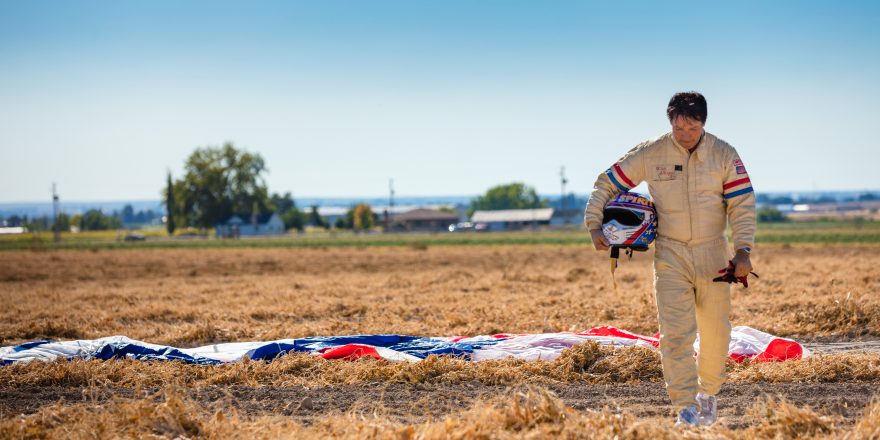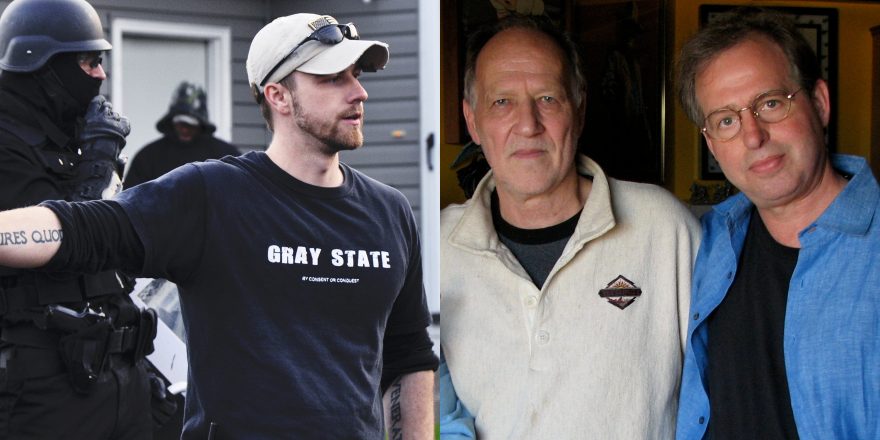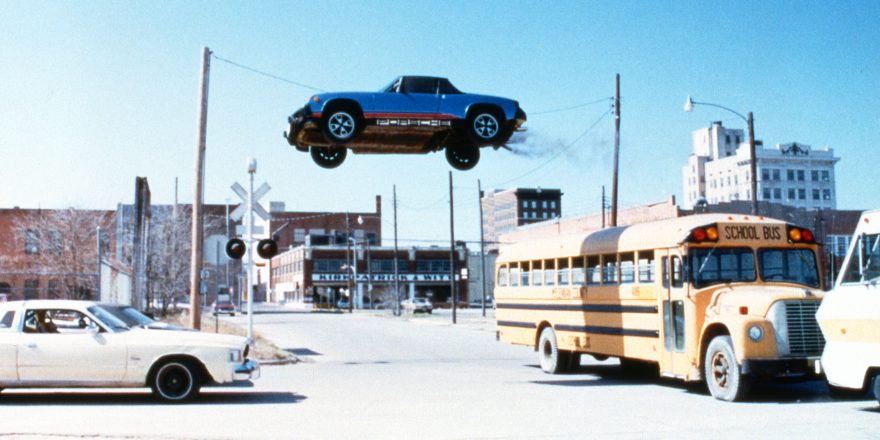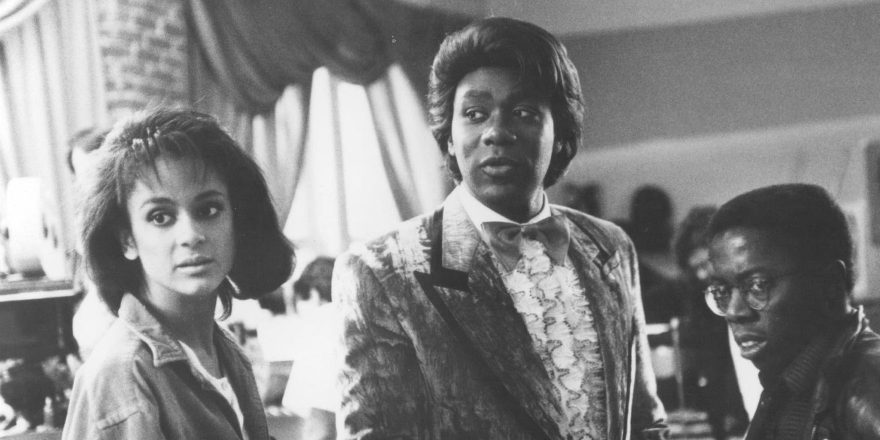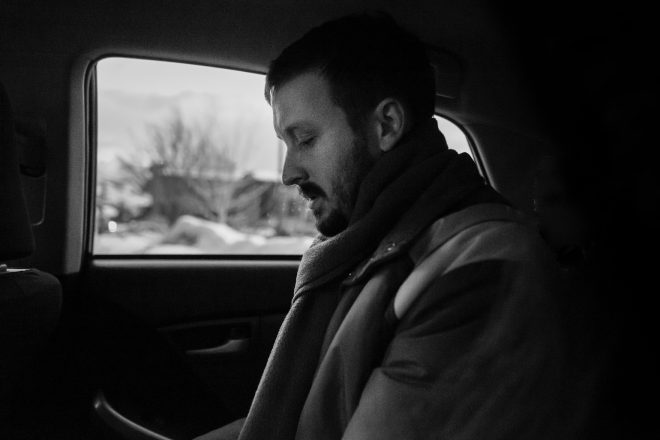My name is Kurt Mattila and I believe in ghosts.
I moved to Los Angeles 25 years ago and immediately denounced my New England heritage as I embraced the culture, food, opportunities and colorful local characters of Southern California. I came armed with a mid-1990s filmmaker’s dream of directing a film – auteur-style, with total independence – and then selling it to a distributor. Along the way, I detoured through the world of post-production, main title design, visual effects and commercials. And just when I thought I’d veered too far off the path, almost forgetting my initial reasoning for moving 3,000 miles in the first place, I met a stuntman named Eddie Braun and my life changed forever. Or maybe it just got back on track. Either way, time will tell as my indie feature documentary about Eddie Braun, Stuntman, sits on the Disney+ home page, couched between such offerings as The Mandalorian and Loki, in the most surreal and thrilling setting I could ever possibly have imagined. Even while writing this, I’m attempting to stave off symptoms of the strongest documented case of imposter syndrome to date.
The my chances of making it to the streaming platform were a long shot – about the same odds Las Vegas had on Eddie Braun surviving the ending of his own story. (It’s true, look it up!) Making a self-financed, independent film is difficult period, but it’s especially hard in documentary, because you’re setting out to make a film without knowing the ending. That is a prospect almost as terrifying as trying to jump the Snake River Canyon in a homemade, steam-powered rocket. After seven years of me putting everything on the line to finish it, Stuntman got an ending. Well, two endings. One in the actual film, the other an ending to the adventure of making it. Fortunately, both were Hollywood endings thanks to the help of Dwayne “The Rock” Johnson, Dany Garcia, their production company Seven Bucks Productions and some friendly, collaborative ghosts.
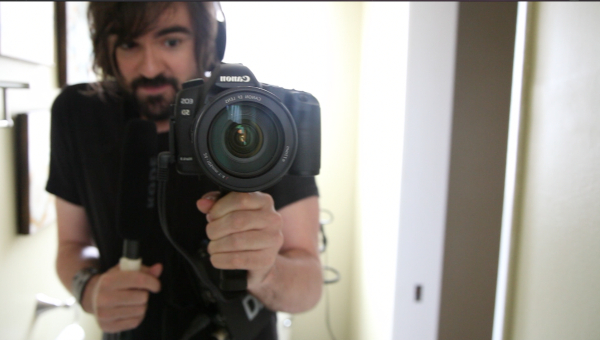
Now, it’s important to note that New Englanders have a long and sordid history of fearing things they don’t understand and then burning said things at the stake. (That, and of course hating the New York Yankees.) However, two decades in Los Angeles helped me shake that legacy and made me significantly more open minded on all fronts. Back east, yoga is still referred to as the “devil’s stretch” in certain small towns.
My newfound broad mindedness was first tested in 1999 while traveling back to Los Angeles after my first directorial gig in New York. Sitting next to me on the flight was a kind and wonderful woman who told me during the in-flight movie, The Sixth Sense, that she encounters ghosts all the time. As we were landing, she told me that the same thing was happening to me, but I just don’t realize it because I didn’t believe. Before I could ask more questions, she got up and disappeared down the aisle to catch a connecting flight.
I was haunted by this encounter, but over the years all but forgot about it, until 2007 when, completely broke, I took a job editing the In Memoriam section of the Oscars. I swear, while editing in my cold little bungalow in Silver Lake, I could feel the opinions of the recently departed reaching me from beyond the grave. Don’t forget, according to The Sixth Sense, the cold was the first sign that we were not alone! For me, it was like I had a crowded client couch of celebrity spirits behind me and no P.A. to help keep them entertained while I worked.
If I took my headphones off, I could almost hear the ghost of Robert Altman yelling, “Really?! The vastness of my life’s work and you’re going to use that photo in this half-baked montage?” Whereas Red Buttons and Don Knotts were both just happy they made the cut, and Jack Palance was definitely the one poltergeisting me. I used the shot of him doing pushups on a previous Oscar broadcast instead of an iconic moment from The Good, the Bad and the Ugly. “Jack, the kids remember that moment – it’ll boost ratings!” I had Glenn Ford first up in the sequence and that was just fine with him. I loved Mr. Ford as Pa Kent in Richard Donner’s Superman, so he had that spot guaranteed. I hope whoever is doing this year’s Oscars has the same reverence for Richard Donner.
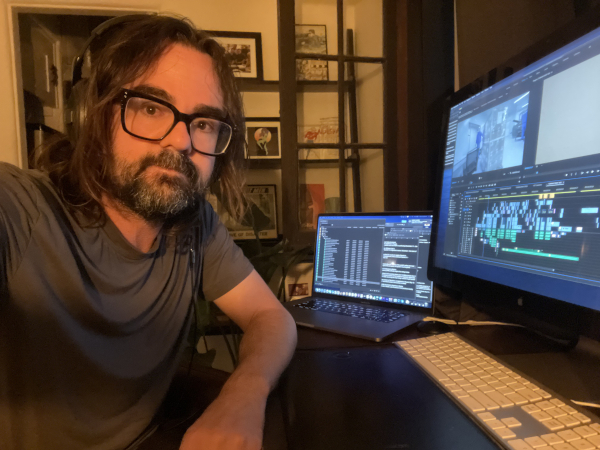
After my haunted Oscars job, work as a freelance filmmaker was starting to pick back up, but my 1990s film dream still wasn’t realized. I knew that I wouldn’t be making a witty social commentary about life at a convenience store or a new spin on the gangster genre complete with genius monologues. Those were sacred works never to be duplicated. But the business was starting to change as well. Sundance Cinderella stories were starting to get tuned out and it turned out that the Midas Man of Miramax, who we all at one point in the ’90s dreamed would buy our film and change our lives, was actually a horrifying monster. Still, the search continued for my 1990s auteur film. If only I’d stayed in touch with that psychic woman from the plane, she could’ve given me some insight into the project that I’d be willing risking everything to direct. Then I met Eddie Braun.
Forged in the fires of Southern California, coming of age in Manhattan Beach and finding his life purpose at a daredevil event in Pomona, Eddie Braun was one fascinating individual. As a child, he met his boyhood hero Evel Knievel and, like many kids of his generation, wanted to emulate him. Eddie did so by becoming a professional stuntman at age 17. Now, 30 years later, Eddie wanted to retire from stunts by attempting to finish what his hero started: the infamous Snake River Canyon Jump in Twin Falls, Idaho, that almost killed Evel back in 1974.
I had the life-changing opportunity to tell this story because I serendipitously met Eddie on the set of the first car commercial I ever directed. It was explained to me by my A.D. that the single most important person needed for this job was the stunt driver. They inhabit the car like a character, steering and turning it to hit its mark like a seasoned actor on four wheels. So I hired Eddie and he opened my eyes to the often unseen world of the stunt community. I immediately learned that stunt performers love making movies. So much so, they use their bodies to create incredibly dangerous stunts and action sequences.
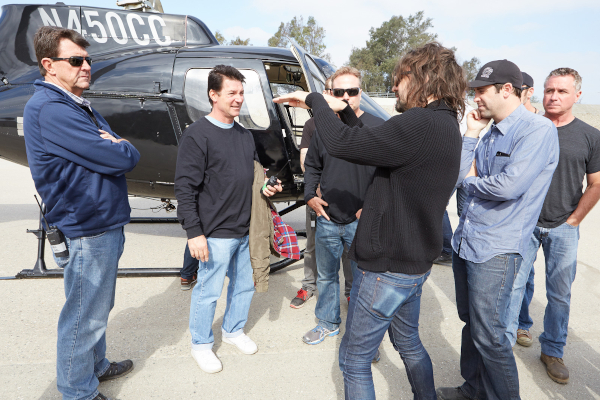
My impressions of a stunt performer were formed after watching Burt Reynolds’ brash, macho hero in Hooper and the “making of” documentary about Raiders of the Lost Ark, where it was revealed to us that a tough and talented man named Terry Leonard was the one in the hat being dragged under that Nazi truck.
But Eddie was the opposite of those men, not in talent or superhuman ability, but in character. Eddie is the sweetest, most enthusiastic collaborator a director could ever ask for. It was hard not to love this guy. So when he told me about the Snake River odyssey that he was about to embark on, I asked if I could climb aboard and film it.
One of the great things about documentaries is that you can just start. No pre-production, no development, no green light, just grab a camera and go. So, we did just that and while filming Eddie getting ready for the big jump, I felt something again. That same feeling I had with the Oscars job. The spirit world was closely watching. In this case, it was Evel Knievel making his way to the client couch from beyond the grave.
It’s hard to imagine today the impact Evel Knievel had on 1970s pop culture. A true anomaly known more for his crashes and failures than his successes. A real-life action figure complete with a line of toy vehicles, including a “Skycycle,” a play-set called Escape from Skull Canyon, a lunchbox and a comic book. But Evel was real. He wore a cape and costume as he jumped motorcycles. Evel Knievel was like if Robert Downey Jr. actually was Tony Stark and you could tune into ABC Wide World of Sports to watch him fight crime as Iron Man.
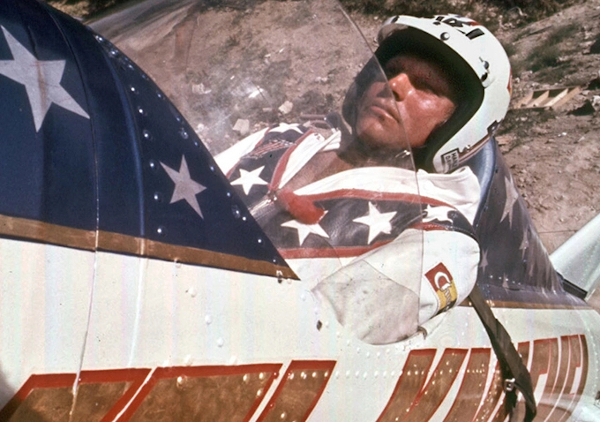
There are several great documentaries about Evel Knievel, all variations on the same legend, ending with the stunt-gone-wrong at Snake River, one the first pay-per-view events. The great un-jumpable canyon beckons. Before he died, Evel even threw down the gauntlet saying, “Who knows, maybe someday someone will even jump the Snake River Canyon and be successful.” So, of course, he was haunting us in the most encouraging way. On the day of the launch, I don’t think it was just me who could feel it. The ghost of Eddie’s childhood hero showed up to see if this career stuntman could clear the canyon and land on the other side.
The launch was insane. It’s an experience I don’t ever want to relive, because for several moments I thought I was about to film a man die. Eddie flew past his calculated landing spot by half a mile, because it turned out there was too much steam in the tank. He had to launch immediately or the whole thing was going to blow up. His parachutes were deployed too late, making his landing even rougher and more dangerous. What’s more, the walkie talkies shorted out at the exact moment of the launch and I couldn’t confirm that my 12-person camera crew were even rolling. When I ran the half mile to get to Eddie to see if he’d survived, my thoughts were, “I’m not even sure I got the shot!”
But thanks to Evel, or the film gods, or both, we got the shots. All of them, in slow motion. Eddie even somehow crash-landed the rocket so it was backlit on impact, his American flag parachute slowly flickering in the sunlight as it descended. Eddie lived and we got the proof from 12 different angles. Now came the even harder part of putting it altogether in a compelling film.
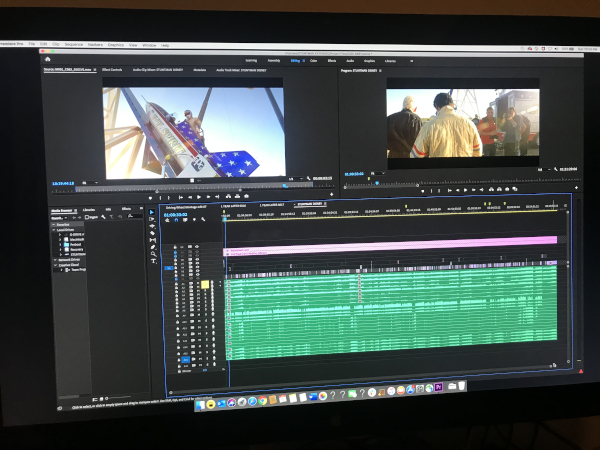
We didn’t have any money to pay an editor, so I wound up cutting the film back at the haunted Silver Lake bungalow. I considered myself a director now and resisted the need to go back to my “previous life” as an editor. But if we ever wanted to finish Stuntman, I had to get cutting. Also, as our sage executive producer Julie Benson told me, “No one is going to pay you to finish your passion project, idiot.”
To compare Stuntman to Once Upon a Time in Hollywood, if Eddie Braun were Brad Pitt/Cliff Booth, then his Leonardo DiCaprio/Rick Dalton was none other than Charlie Sheen. Except for taking on the Manson family, Quentin Tarantino’s film has many parallels to Eddie and Charlie’s experiences together. So when I had a rough cut of Stuntman ready, Charlie offered to screen it at his house. I’ve never been is a position like this before, presenting a film of a man’s life to him in a home theater of that scale.
I plugged my well-worn laptop into the giant screen and hit play. As we approached the launch sequence, the suspense was cut short by Charlie yelling, “Wait! Wait! Wait! Stop the film!” I hit pause, not knowing what was happening. Charlie leapt to his feet and yelled, “I’m sitting next to Eddie – he’s right here and alive. But watching this now, I’m still not convinced that he’s going to survive!” It was the greatest complement anyone could have given me at that moment.
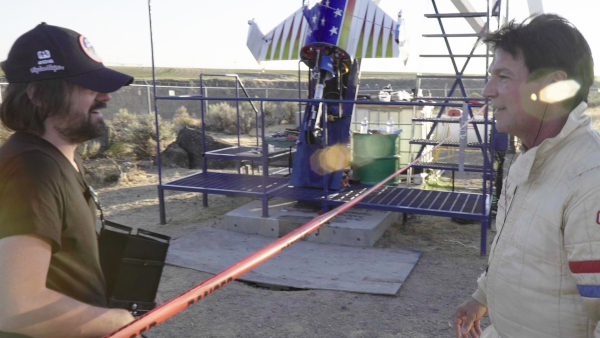
Despite this much-needed confidence boost, the film was still shaky. The second act wasn’t coming together and I couldn’t quite get act one to rhythmically build towards the inciting incident. If only we could’ve hired a real documentary editor, they could’ve solved these pacing issues. To make matters worse, the sacrifices I made for the film took a toll on my personal life, as I wound up breaking up with my girlfriend and moved from Silver Lake to another little place in Los Feliz.
Despite my sadness, I couldn’t deny the tremendous creative energy I suddenly felt in my new Los Feliz home/editing bay. It was like a spiritual muse was there, helping guide the film. It was that familiar feeling once more: the ghosts. I set up my editing station and watched the latest cut. With a fresh perspective, the problems and solutions were now clear! It was like when Neo finally saw the matrix and knew how to defeat Agent Smith. I saw what to do: Act one fixed! Act Two? Move that here and that there, cut this, add this, and now it’s singing! In all my time in Los Angeles, I have never felt such energy in one room. I wish someone had filmed me in those moments. Some days I was up till 4 a.m., but it didn’t matter. Time had no meaning while I was shaping the story in my passion project.
We locked picture and scraped together some finishing funds. My good friend Rob Wilson, who had experience finishing documentary features, helped us get over the line. My mid-1990s film dream was in the process of being realized! All that was left was the “selling to a distributor” part, which, as it turns out, is the most difficult one. We first tried the festival route, but struck out. The advice we then received was to find an executive producer, someone who could help shepherd the film to either a studio or a distributor. Trying that route, we learned that there isn’t a device invented that could measure how fast doors could close on us.
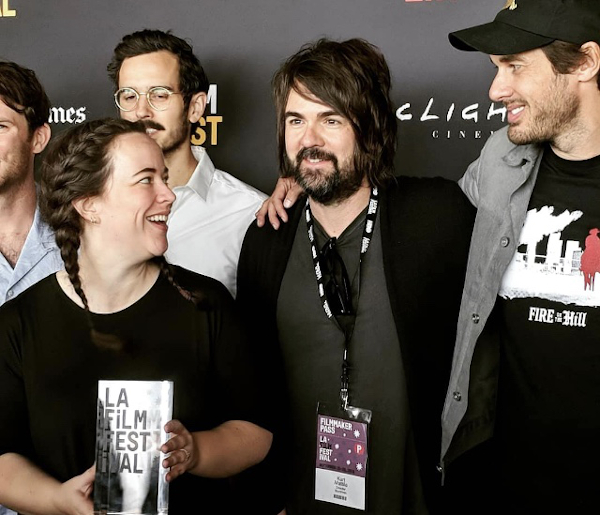
But then a miracle happened. After providing screener copies to various members of the stunt community for their endorsement, a stuntman named Tanoai Reed watched the film and loved it. He offered to help us by getting a copy of the film to the man that he stunt doubles for: the one and only Dwayne Johnson. Dwayne and his production company, Seven Bucks, were early supporters of Eddie’s odyssey. Initially, the rocket jump was going to be a live network event which Seven Bucks was considering producing. But a group of entertainment lawyers wisely concluded that there was a strong possibility that Eddie would be killed on live TV and the deal fell apart.
Dwayne saw that we had taken the dangerous rocket project and finished it as a documentary feature. In between doing 1.5 million other things, he watched the film in his trailer and loved what he saw. He offered to help us a find the film a distributor. After a few months, Dwayne, his producing partner Dany Garcia and the rest of the amazing folks at Seven Bucks not only landed us a distribution deal, but one at an unimaginable destination: The Walt Disney Company. They were soon launching something called “Disney+” and wanted to buy Stuntman and release it on their new platform. What? Since when does Disney buy independent documentary features? A true Hollywood ending for this filmmaking adventure.
Here’s where the ghost story comes full circle. As it turns out, there’s a significant plot of land in Los Feliz just 800 feet away from where I had all those inspired nights of editing. Today it is a Gelson’s Market, but back in 1929 it was the location of the original Walt Disney Studios. The birthplace of Mickey Mouse and Donald Duck. It was also where Walt Disney took the biggest gamble of his career and put everything on the line to produce a film called Snow White and the Seven Dwarfs.
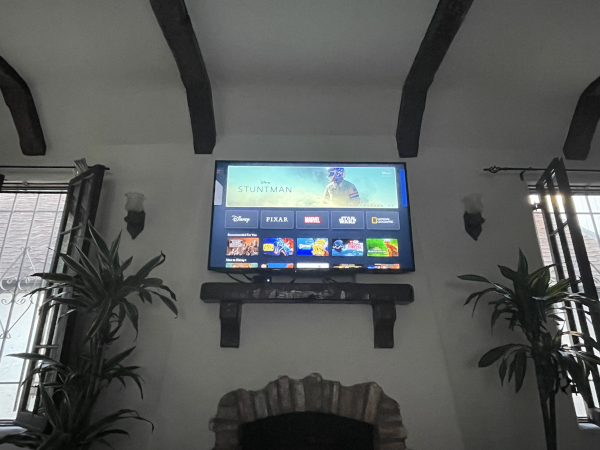
Amazingly enough, the animators who worked on Snow White all lived down the street in what is now known as the “Snow White Cottages.” When it came time for these artists to design the actual cottages in the film, they looked no further for inspiration than out their front door where eight storybook Tudor cottages were perfectly nestled in a Disney-like oasis. During the production of Snow White, Walt’s brother and producer Roy even lived in one of these cottages.
Today the entire property is illuminated with Disney lore. I believe I felt all that exciting, creative energy, because I completed Stuntman in one of those cottages – Roy Disney’s, to be exact – guided by ghosts as I edited the night away. Imagine my surprise and delight that the studio Roy and his brother Walt started down the street turned out to be the one that bought and distributed the film. So now you understand why I believe in ghosts.


